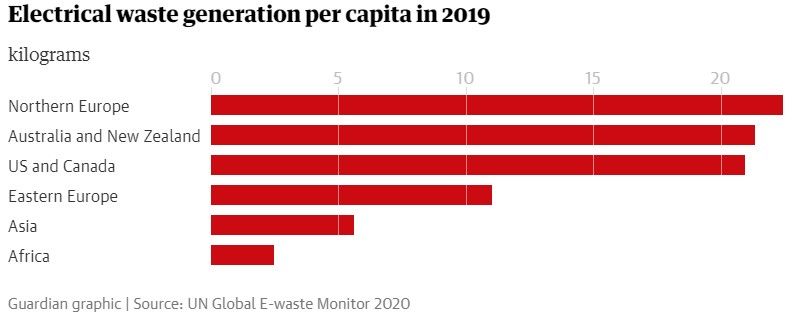What to do with a mountain of crap ...
Last month, The vBridge Wrecking Crew™ of Dean and Corey, ripped out a whole rack’s worth of legacy backup infrastructure, LTO6 tape libraries, associated servers, and the storage that comes with it. We chucked it in our cars, and sped back to the office, dumped it in the hallway outside the bosses office and left it there. It’s still sitting there to this day. We should probably of dispose of it. I voted for ceremonial burning in the carpark, then dumping it in the Avon river, but apparently that’s not a thing. Neither is taking it to the landfill now. It would seem we now need to do this responsibly these days, because, I don’t know, the environment or something…
It would seem we are not the only ones facing this dilemma. In 2019, over fifty million metric tonnes of e-waste was generated worldwide, up twenty per cent in last five years. That number is predicted to rise significantly over the coming years, fuelled by higher consumption, shorter life cycles and lack of viable repair options. E-waste is the world fastest growing domestic waste stream.

As most of us should know by now, e-waste is not particularly great for the environment. Such niceties as mercury, CFCs, heavy metals, and other noxious substances are contained in electronic equipment, and environment aside, these pose significant risk to our health too, if they end up in the food chain. How about a side order of mercury with that crisp green salad? Highlighting the environmental issue further – it is estimated that only twenty per cent of disposed e-waste worldwide is recycled. The other eighty per cent is dumped and is estimated to have a value of tens of billions of dollars in valuable metals such as gold, silver, platinum, copper and iron.
From a New Zealand perspective, we are one of the biggest producers of e-waste along with Australia at 22.4kg per capita, and we recycle less than ten per cent of it. Eighty thousand tonnes of it. That’s appalling!

So where to for us? New Zealand has no centralised recycling scheme for e-waste. Ninety per cent of it is sent to the landfill, which isn’t always necessarily problematic if the landfill is properly designed and well maintained. Recent governments have invested millions into local e-waste schemes over the last decade, much of it coming from a waste management funds. Although, these schemes have had varying degrees of success, and local government and small waste operators lack the scale to deal with it. Perhaps the next big step for New Zealand is stewardship schemes, which the current government is looking at. These schemes put the onus on manufacturers of such things as plastic packaging, tyres, refrigerants, farm plastics, ag-chemical containers and of course e-waste, to be more responsible for where these things end up. Stewardship schemes work by having those making and using these products, take responsibility to recover them at the end of their life cycles, and prevent them ending up in landfills. As part of a wider plan to slash the amount of rubbish being dumped across New Zealand, these items may be prioritised for mandatory schemes under the Waste Minimisation Act.

Meanwhile back at vBridge, our legacy backup hardware won’t get set on fire and chucked in the river after all. It will be disposed of as responsibly as we can do it. Some of it may end up being repurposed elsewhere (on sold by recyclers) while what remains will get sent to a recycler, broken down, metals separated and extracted, and hopefully get a second life in something else.
And so the cycle continues.
